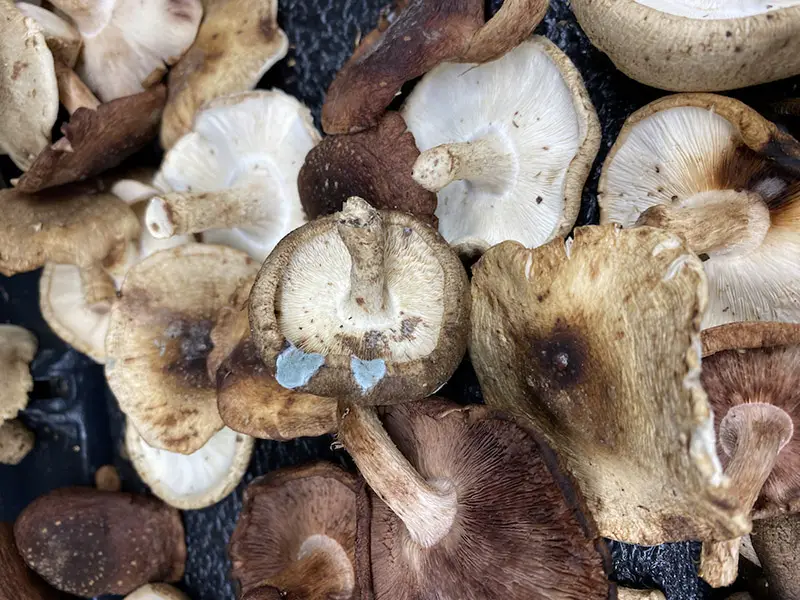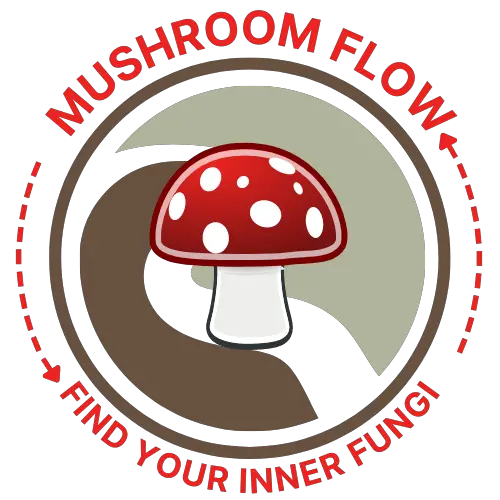You may have wondered if mushrooms are fungi, can mushrooms get moldy? After all, isn’t mold a type of fungus?
Like almost any other food, mushrooms have the ability to grow mold. Both mushrooms and mold belong to the fungi family. However, they are not used interchangeably. All mold is a fungus, but not all fungi are mold.
Now that we know mushrooms can get moldy, let’s dive deeper to understand how mushrooms get moldy and what to do to prevent mold.

What Causes Mold on Mushrooms?
Where does mold come from? Microscopic mold spores are common everywhere, indoors and outdoors. Mold spores are hunting a damp environment to call home. When they find damp environments, they land and grow until they officially become mold. From there, it is just a race against the clock to see how quickly they can spread before they’re stopped.
These spores are exactly why we want to place our food in airtight containers. By closing off access, those spores are going to have a much harder time making themselves at home in our newly purchased loaf of bread, fresh fruit, or heaven forbid our delicious mushrooms.
Like many foods, mushrooms have a tendency to start secreting water as they age which provides the perfect environment to grow mold.
How do you know if mushrooms are moldy?
You will be able to easily tell if your mushrooms are starting to go bad either by smell, feel, or sight. If any food you have is giving off an unpleasant odor, it is safe to assume that it is rancid, and you probably want to throw it away.
Have you ever grabbed food out of the refrigerator that looked perfectly fine, but then soon noticed the texture wasn’t quite right? Perhaps soft or slimy? This is going to be one of the first signs that your mushrooms have gone bad and you should proceed with caution. In fact, the U.S. Department of Agriculture recommends discarding any mushrooms with mold.
The more obvious sign that your mushrooms have gone bad is that you can visibly see the mold starting to grow. It seems like one minute your mushrooms are fine and then you come back an hour later and the mushrooms are covered in mold.
The mold that attaches itself to mushrooms can range in color. The most common is a white or grayish fuzz. It can also be blue or even green. If you reach this point, the mushrooms likely cannot be salvaged and should not be consumed. Instead, dispose of them immediately.
How do you keep mushrooms from getting moldy?
As mentioned above, proper storage is the key to prolonging the life of your mushrooms. On average, mushrooms stay good for up to ten days if stored correctly. As with any fresh produce, once they are sliced up their shelf life dramatically decreases. Sliced mushrooms specifically will last less than a week before you start to notice signs of mold setting in.
Another good rule of thumb for handling your mushrooms is to not wash them prior to storing them. Remember, mold loves a wet surface. If you think your mushrooms need a scrub, wait until right before you plan to eat and/or cook them to do your cleaning.
You can also put your mushrooms in a brown paper bag while storing them in the fridge. The bag helps to absorb the moisture the mushrooms give off as they age, keeping them mold-free for a bit longer.
If you plan to store mushrooms in the refrigerator, avoid stacking anything on top of them and be careful not to bruise them. Just like cutting them, if they are bruised, they will not fight off those pesky mold spores for long.
The best way to ensure your mushrooms stay fresh is to use them within a couple of days of purchase. In the event that you buy mushrooms and a couple of days have gone by without using them, you can opt to freeze them to cut down on waste.
The caveat to freezing mushrooms, however, is that you need to first cook them before you freeze them. Otherwise, your defrosted mushrooms will not taste very appealing. They might actually not taste like anything at that point.
The last way you can stop your mushrooms from getting moldy is to dry them in an oven or dehydrator. After you do this, you can store them in an airtight container, and they can stay good for around 9 to 12 months. Again, just be extra careful to eliminate all moisture first. This is a great option if you want to add mushrooms to soups or quiches.
Final Thoughts
Yes, mushrooms and mold are both fungi, but one can really enhance a meal while the other can ruin it. In order to keep mushrooms as delicious and fresh as possible, we must eliminate as much moisture as possible.
The reality is that we cannot prevent our mushrooms from giving off liquid as it is a natural part of decomposition, but we can practice good food storage techniques to increase the lifespan of all mushrooms.
